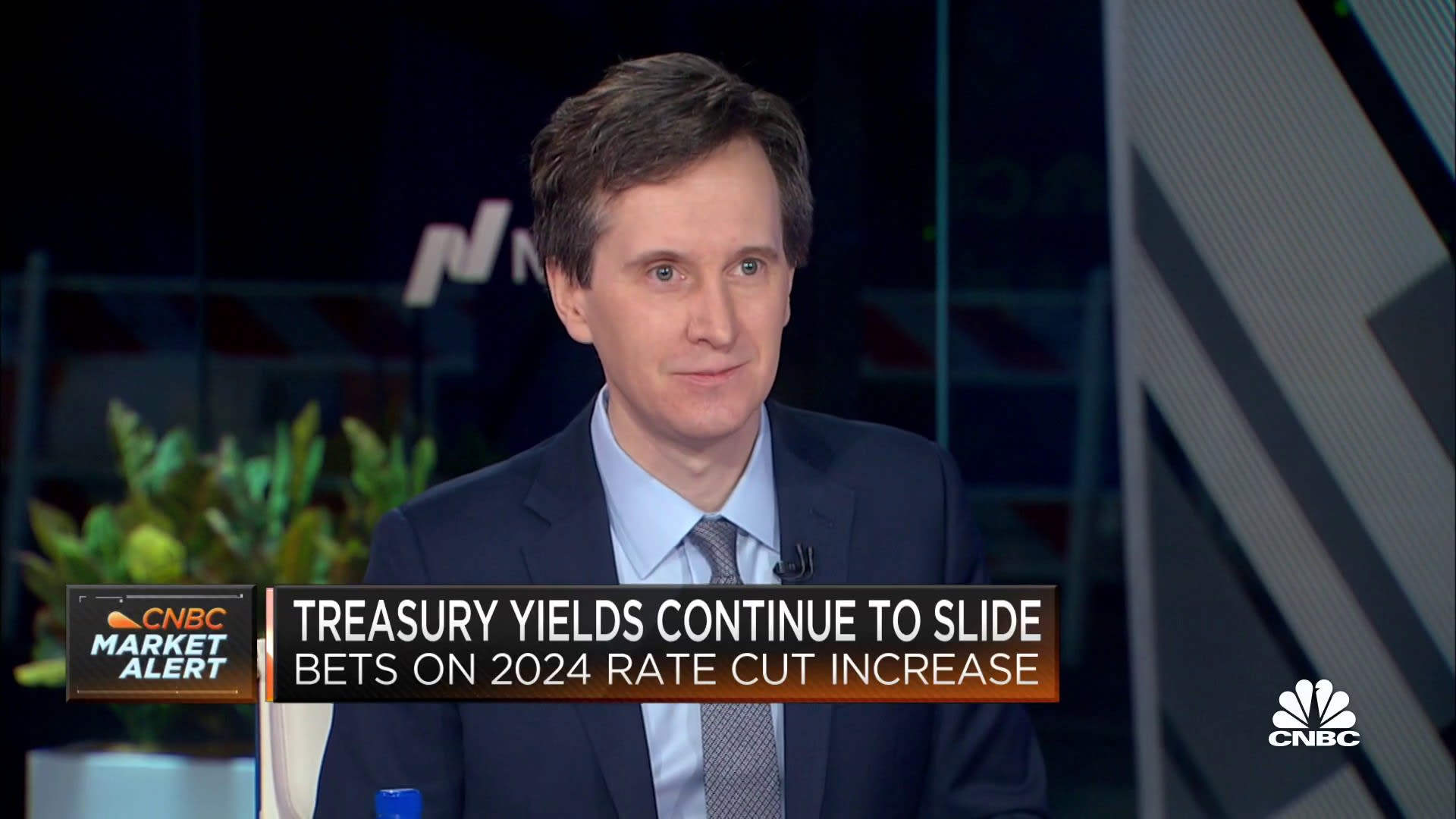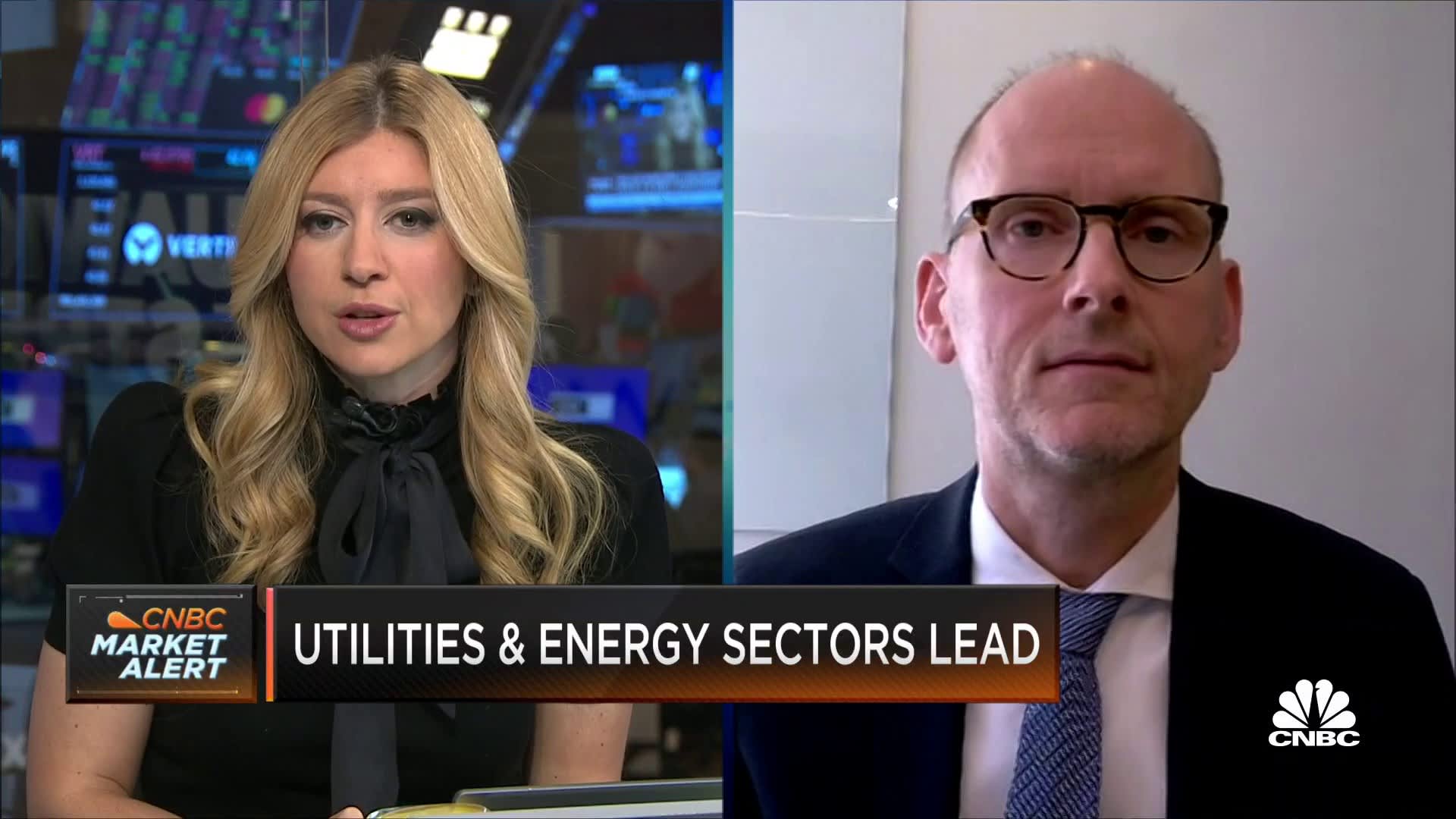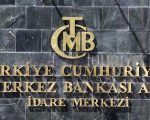The Marriner S. Eccles Federal Reserve building during a renovation in Washington, DC, US, on Tuesday, Oct. 24, 2023.
Valerie Plesch | Bloomberg | Getty Images
Interest rate cuts don’t happen during good times, something important for markets to remember amid hotly anticipated easing next year from the Federal Reserve.
If the Fed meets market expectations and starts cutting aggressively in 2024, it likely will be against a backdrop of a sharply slowing economy and rising unemployment, which in turn would bring lower inflation.
Central bank policymakers, however, won’t cut for the sake of cutting. There will have to be a compelling reason to start easing, and even then rate decreases are likely to come slowly — unless something breaks, and the Fed is forced into more aggressive action.
“The market keeps trying to front-run these rate cuts, only to be disappointed,” said Kathy Jones, chief fixed income strategist at Charles Schwab. “In a different cycle, when inflation hadn’t spiked so much, I think the Fed would have been cutting rates already. This is a very different cycle. There is going to be much more caution on their part.”
The latest market rumble over the prospect of rate cuts came Tuesday morning, when Fed Governor Christopher Waller said he could envision easing policy if inflation data cooperates over the next three to five months.
Never mind that fellow Governor Michelle Bowman, just minutes later, said she still expects rate hikes will be necessary. The market instead chose to hear Waller more clearly, perhaps because he has been one of the more hawkish Fed officials when it comes to monetary policy, while Bowman was merely reiterating an oft-stated position.
Five rate cuts anticipated
“If the economy moderates at all, you could be talking about a real disinflation story, and I think that’s what Waller would be getting at,” said Joseph LaVorgna, chief economist at SMBC Nikko Securities America. “If the real fed funds rate continues to go higher, as I expect it will, then you’d want to offset that through rate cuts. And the amount of rate cuts I think they’re going to have to do is a relatively large amount.”
LaVorgna, the chief economist at the National Economic Council under former President Donald Trump, said he thinks the Fed could have to cut by as much as 200 basis points next year, or 2 percentage points.
Market pricing has grown more aggressive on Fed policy easing, with fed funds futures now pointing to five quarter-percentage-point rate cuts next year, one more than before the latest speeches, according to the CME Group. Stocks have rallied since as investors prepare for lower rates.

It could be a risky bet if inflation doesn’t cooperate.
“The Fed doesn’t want to take its foot off the brake too early. I don’t see them cutting just to reach some theoretical neutral rate,” said Chris Marangi, co-chief investment officer for value at Gabelli Funds. “We expect some economic softness next year, so that won’t be a surprise. But a significant cut in rates needs to be preceded by significant economic weakness, and that’s not discounted in stock prices today.”
Fed officials at their meeting in two weeks will update their economic projections over the next several years, a process that includes revisions to the so-called “dot plot” of individual members’ expectations for interest rates.
During the last update, in September, Federal Open Market Committee members penciled in the equivalent of two quarter-point cuts next year. However, that was predicated on another rate increase in 2023 that almost certainly is not happening, judging both by recent Fed commentary and market expectations.
If the Fed were to go on a cutting spree next year, then, it would almost have to be accompanied by pronounced economic weakness. Virtually all previous Fed cutting cycles have happened during or around recessions.
Fears of a hard landing
Hedge fund titan Bill Ackman said Tuesday that unless the Fed starts cutting, it will in fact be the cause of a sharp downturn that it then would have to address.
“We’re betting that the Federal Reserve is going to have to cut rates more quickly than people expect,” Ackman said in an upcoming episode of “The David Rubenstein Show: Peer-to-Peer Conversations,” which is aired by Bloomberg. “That’s the current macro bet that we have on.”
“I think there’s a real risk of a hard landing if the Fed doesn’t start cutting rates pretty soon,” the head of Pershing Square Capital Management added.
However, even some of the historically more dovish Fed officials aren’t showing their hands on when they think cuts will come.
Atlanta Federal Reserve President Raphael Bostic, an FOMC voter next year, wrote Wednesday that he sees pronounced downward trends in economic activity and inflation. Richmond President Thomas Barkin said he also sees slowing but added that he remains “skeptical” that inflation will come down to the Fed’s 2% target quickly and said policymakers need to keep potential rate hikes on the table.

“The Fed is trying to slow the economy down, and if they don’t succeed with slowing consumption down … that would then imply that maybe the market should be pricing that rates are going to be higher for longer than what futures are pricing at the moment,” Tosten Slok, chief economist at Apollo Global Management, told CNBC on Tuesday. “Maybe we need to get all the way into Q3 before the Fed will begin cutting.”
Indeed, Gary Cohn, former director of the NEC under Trump and former chief operating officer at Goldman Sachs, said the kind of economic weakness that would precipitate rate cuts is unlikely, at least in the first part of 2024. Consequently, the Fed could lag its global counterparts when it comes to relaxing the fight against inflation and not start cutting until “maybe” the third quarter, he said.
“You don’t want to be early to leave when you’re the last one to come to the party,” Cohn told CNBC’s Dan Murphy on Wednesday at the Abu Dhabi Finance Week conference. “You have to be the last one to leave the party, so the Fed is going to be the last one to leave this party.”








